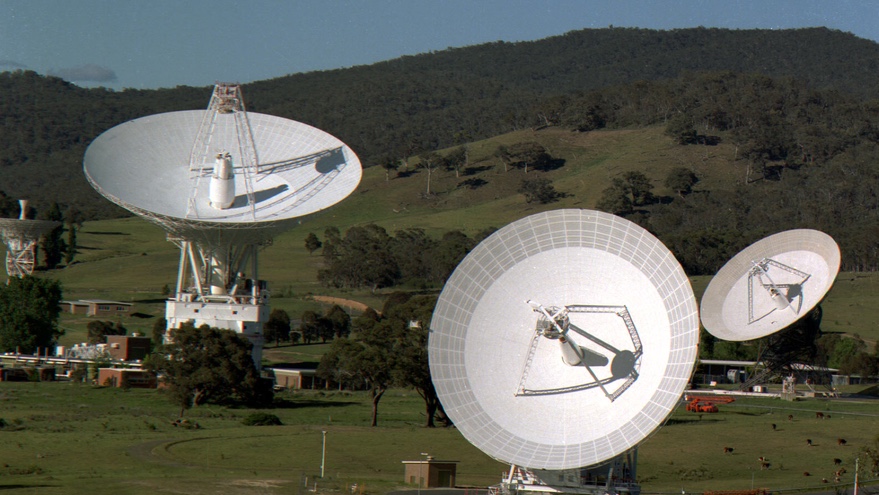WASHINGTON — A growing number of spacecraft missions, as well as NASA’s Artemis program, are putting new pressures on the agency’s Deep Space Network of antennas that communicate with them.
In a July 7 presentation to the steering committee of the planetary science decadal survey, Brad Arnold, manager of the Deep Space Network (DSN) at the Jet Propulsion Laboratory, says that even with upgrades to the radio antennas at sites in Australia, California and Spain, the system can’t keep up with growing demand from missions.
“We’re trying to add capacity and more antennas, but we can’t keep up with the demand that’s currently out there, so missions should expect to be getting less availability,” he said.
The DSN is used for communications with missions beyond Earth orbit. Arnold says the network relies on projections of demand from current and proposed missions, then runs “loading studies,” or simulations to see how the various antennas can accommodate them.
Missions typically ask for about 20% more data than they actually get. “At this point, nobody is complaining about that. That’s sort of the game: you ask for 20% high and you end up with what you need,” he said. However, over the next decade that 20% difference between what missions ask and what the DSN can provide will grow. “Instead of being 20% short, we’re going to be about 40% short.”
Those missions in critical phases, such as launches, orbital insertions and landings, will be prioritized so they get the communications they need. “Outside of that, you will get a little less,” he said.
Another factor will be demands on the DSN from Artemis missions to the moon. “This is the gorilla in the room,” he said. “When they need telecom and hot backups and priority 24/7, they’re going to get it. That ultimately will affect our ability to service the rest of the missions.”
The proximity of the moon would appear to allow the DSN to use smaller dishes, saving larger ones, 34 and 70 meters across, for more distant missions. “Obviously at lunar distances we don’t need a 34-meter” dish, he said. However, he added they may be cases where larger dishes may be required to provide sufficient margin for some receivers.
Arnold said the DSN is looking at several approaches to increase capacity on the network. One is to push missions to move from X-band to higher Ka-band frequencies. “X-band is becoming congested and the spectrum for data is limited. We really need to start pushing up to Ka-band,” he said, along with studies of optical communications that could provide even higher bandwidth.
X-band, he added, will be around “for the next couple decades” for current missions and those in development. “My point is, we really need to collectively as a group, as we move to the future, think about getting off X-band.”
While NASA is exploring commercialization options for communications with spacecraft in Earth orbit, Arnold says that is not an option for the DSN. “The return on investment is not clear right now for a commercial enterprise,” he said. “We’re quite a long ways off from that actually happening.”
